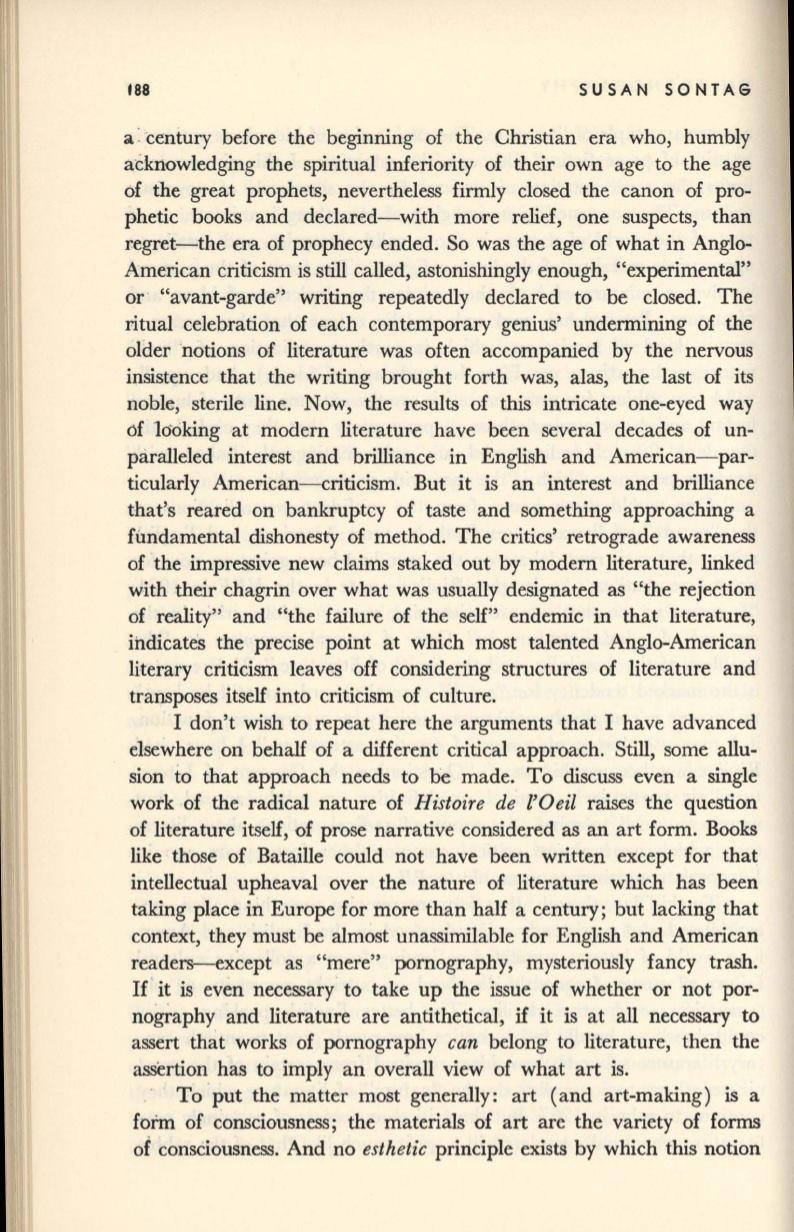
t88
SUSAN SONTAG
a:
century before the beginning of the Christian era who, humbly
acknowledging the spiritual inferiority of their own age to the age
of the great prophets, nevertheless firmly closed the canon of pro–
phetic books and declared-with more relief, one suspects, than
regret-the era of prophecy ended. So was the age of what in Anglo–
American criticism is still called, astonishingly enough, "experimental"
or "avant-garde" writing repeatedly declared to be closed. The
ritual celebration of each contemporary genius' undermining of the
older 'notions of literature was often accompanied by the nervous
insistence that the writing brought forth was, alas, the last of its
noble, sterile line. Now, the results of this intricate one-eyed way
of looking at modern literature have been several decades of un–
paralleled interest and brilliance in English and American-par–
ticularly American--criticism. But it is an interest and brilliance
that's reared on bankruptcy of taste and something approaching a
fundamental dishonesty of method. The critics' retrograde awareness
of the impressive new claims staked out by modern literature, linked
with their chagrin over what was usually designated as "the rejection
of reality" and "the failure of the self" endemic in that literature,
ihdicates the precise point at which most talented Anglo-American
literary criticism leaves off considering structures of literature and
transposes itself into criticism of culture.
I don't wish to repeat here the arguments that I have advanced
elsewhere on behalf of a different critical approach. Still, some allu–
sion to that approach needs to
be
made. To discuss even a single
work of the radical nature of
Histoire de l'Oeil
raises the question
of literature itself, of prose narrative considered as an art form. Books
like those of Bataille could not have been written except for that
intellectual upheaval over the nature of literature which has been
taking place in Europe for more than half a century; but lacking that
context, they must be almost unassimilable for English and American
readers--except as "mere" pornography, mysteriously fancy trash.
If
it is even necessary to take up the issue of whether or not por–
nography and literature are antithetical, if it is at all necessary to
assert that works of pornography
can
belong to literature, then the
assertion has to imply an overall view of what art is.
To put the matter most generally: art (and art-making) is a
fOim of consciousness; the materials of art are the variety of forms
of consciousness. And no
esthetic
principle exists by which this notion


